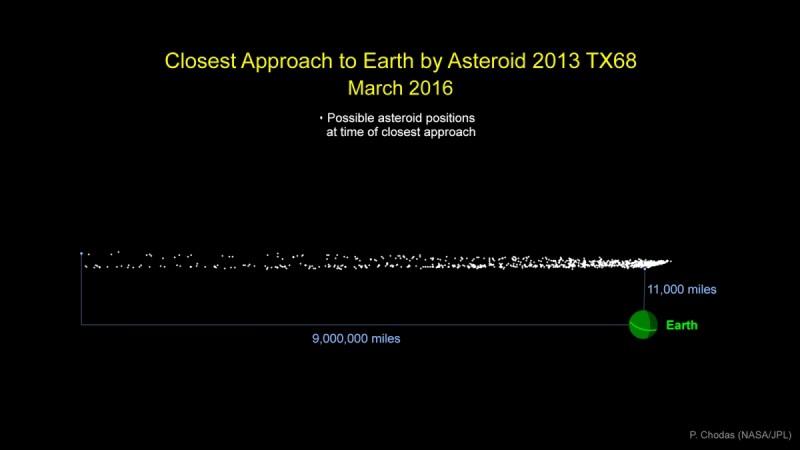
Rumour mongers and doomsday prophets talk of "end of the world" every time a rare celestial event happens, and the last time we heard of it was in September, 2015, with rumours spreading that an asteroid would slam into Earth during the blood moon event. It made the National Aeronautics and Space Administration (NASA) to clarify that no celestial would impact Earth on those dates.
This time, asteroid 2013 TX68 will fly past earth on 5 March at a distance of 9 million miles (14 million kilometers) or 11,000 miles (17,000 kilometers) at the closest, said NASA, rubbishing talks on social media that there are chances of the celestial rock to destroy Earth. It said that there is a huge variation in the possible distance the object will come near Earth, as it was tracked only for a short time since it was discovered by the NASA-funded Catalina Sky Survey on 6 October, 2013.
NASA's Center for NEO Studies (CNEOS) scientists at the Jet Propulsion Laboratory have ruled out the possibility of asteroid 2013 TX68 having an impact on Earth during its flyby next month. It will approach Earth again in the future, the nearest to happen on 28 September, 2017, and then in 2046 and 2097, but chances of impacting Earth is even more remote.
"The possibilities of collision on any of the three future flyby dates are far too small to be of any real concern," said Paul Chodas, manager of NASA's CNEOS. "I fully expect any future observations to reduce the probability even more."
Scientists lost track of Asteroid 2013 TX68 after just three days of observation in October 2013, so they cannot predict its precise orbit around the sun but certain that it won't crash into Earth next month.
"This asteroid's orbit is quite uncertain, and it will be hard to predict where to look for it," said Chodas. "There is a chance that the asteroid will be picked up by our asteroid search telescopes when it safely flies past us next month, providing us with data to more precisely define its orbit around the sun."









